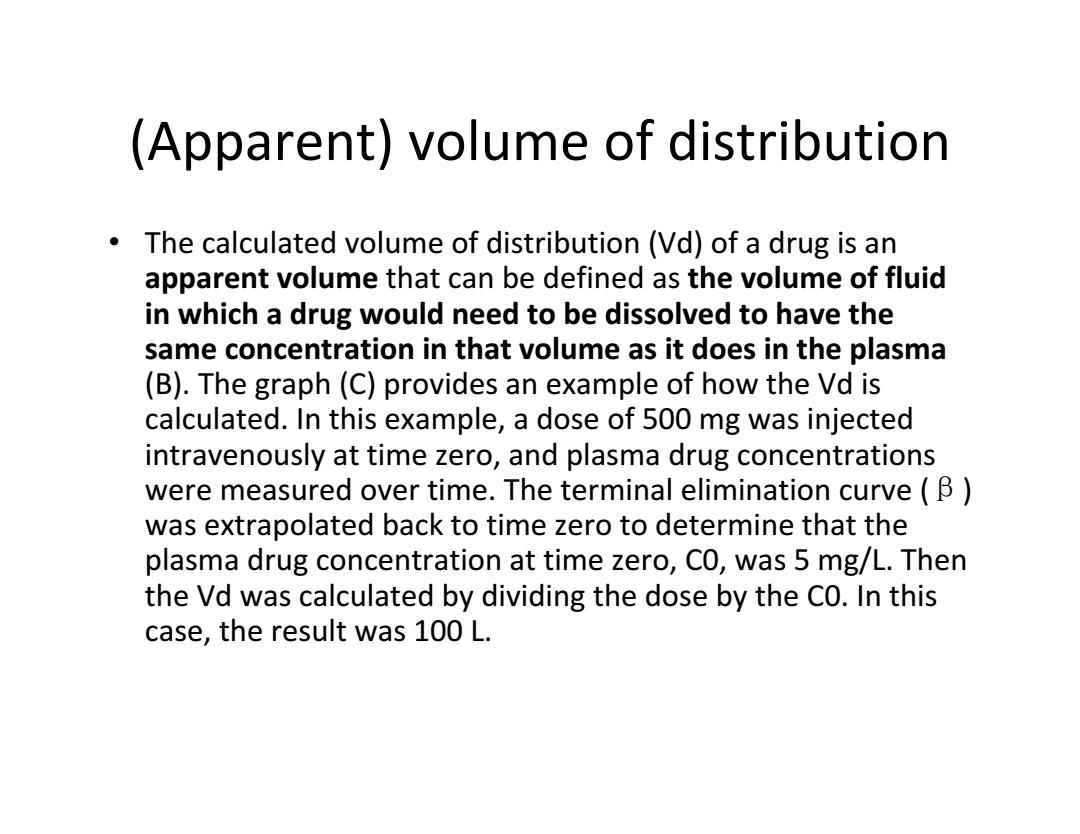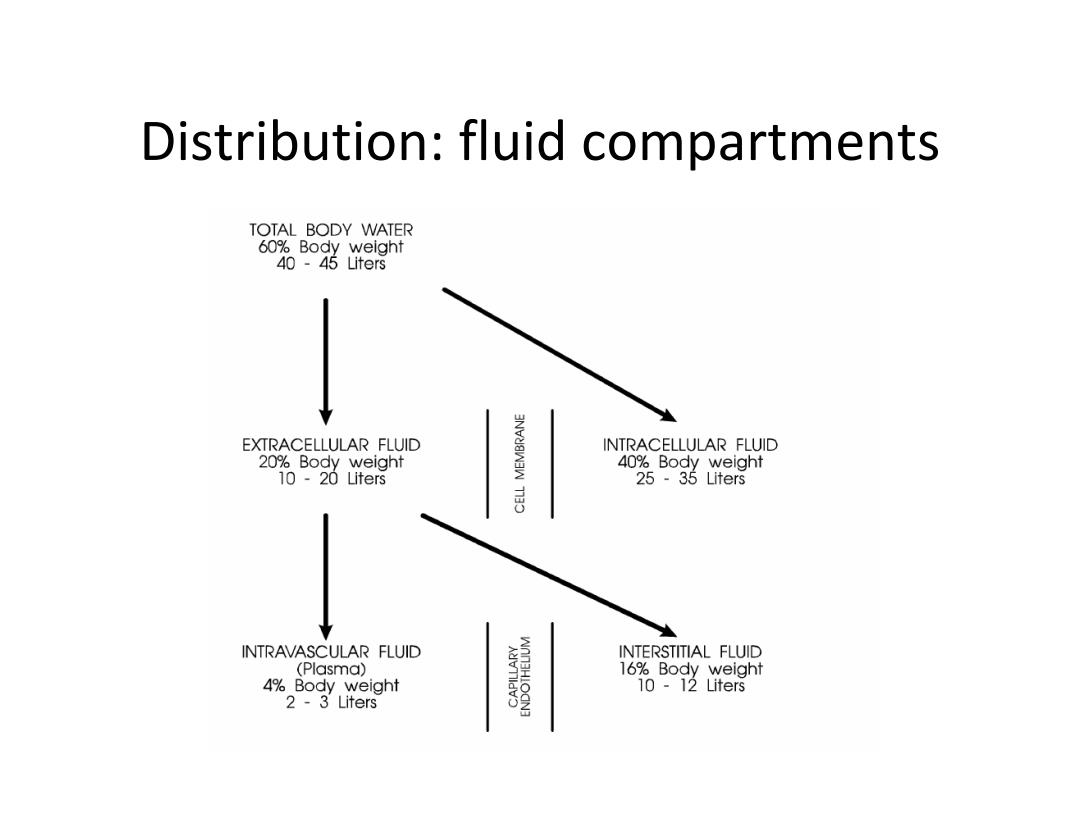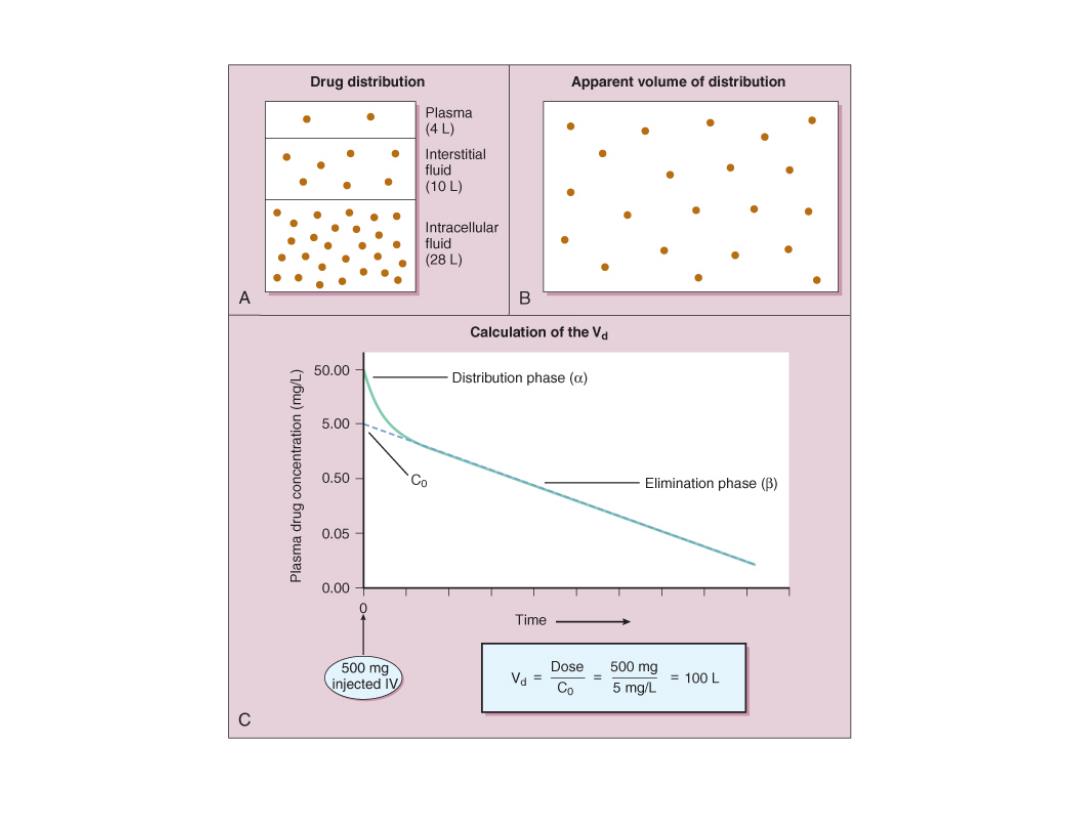
(Apparent)volume of distribution The calculated volume of distribution (Vd)of a drug is an apparent volume that can be defined as the volume of fluid in which a drug would need to be dissolved to have the same concentration in that volume as it does in the plasma (B).The graph(C)provides an example of how the Vd is calculated.In this example,a dose of 500 mg was injected intravenously at time zero,and plasma drug concentrations were measured over time.The terminal elimination curve B was extrapolated back to time zero to determine that the plasma drug concentration at time zero,CO,was 5 mg/L.Then the Vd was calculated by dividing the dose by the Co.In this case,the result was 100 L
• The calculated volume of distribution (Vd) of a drug is an apparent volume that can be defined as the volume of fluid in which a drug would need to be dissolved to have the same concentration in that volume as it does in the plasma (B). The graph (C) provides an example of how the Vd is calculated. In this example, a dose of 500 mg was injected intravenously at time zero, and plasma drug concentrations were measured over time. The terminal elimination curve (β) was extrapolated back to time zero to determine that the plasma drug concentration at time zero, C0, was 5 mg/L. Then the Vd was calculated by dividing the dose by the C0. In this case, the result was 100 L. (Apparent) volume of distribution

(Apparent)volume of distribution Although the Vd does not correspond to an actual body fluid compartment,it does provide a measure of the extent of distribution of a drug.A low Vd that approximates plasma volume or extracellular fluid volume usually indicates that the drug's distribution is restricted to a particular compartment (the plasma or extracellular fluid).The anticoagulant warfarin has a Vd of about 8 L,which reflects a high degree of plasma protein binding.When the Vd of a drug is equivalent to total body water(about 40 L,as occurs with ethanol),this usually indicates that the drug has reached the intracellular fluid as well
• Although the Vd does not correspond to an actual body fluid compartment, it does provide a measure of the extent of distribution of a drug. A low Vd that approximates plasma volume or extracellular fluid volume usually indicates that the drug's distribution is restricted to a particular compartment (the plasma or extracellular fluid). The anticoagulant warfarin has a Vd of about 8 L, which reflects a high degree of plasma protein binding. When the Vd of a drug is equivalent to total body water (about 40 L, as occurs with ethanol), this usually indicates that the drug has reached the intracellular fluid as well. (Apparent) volume of distribution

Distribution:fluid compartments TOTAL BODY WATER 60%Body weight 40 -45 Liters EXTRACELLULAR FLUID INTRACELLULAR FLUID 20%Body weight 40%Body weight 10 -20 Liters 25 35 Liters INTRAVASCULAR FLUID INTERSTITIAL FLUID (Plasma) 16%Body weight 4%Body weight 10-12 Liters 2-3 Liters
Distribution: fluid compartments

Drug distribution Apparent volume of distribution Plasma (4L) Interstitial fluid (10L) Intracellular fluid (28L) A B Calculation of the Vd 50.00 Distribution phase (a) 5.00 0.50 Co Elimination phase (B) 6nup 0.05 0.00 0 Time 500mg Dose 500mg injected IV Vd= =100L Co 5 mg/L C